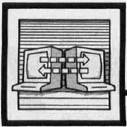
Telecomputing Today
Arlan R. Levitan
Electronic Funnies
Late word from Washington has it that the Federal Communications Commission may reconsider the timing of its decision to impose local telephone system access charges on commercial information services in January 1988. Over the last few months, the FCC has been deluged with protests opposing the surcharges. According to Tymnet, a provider of packet-switching services, of the 3,964 letters filed by September 14, only 5 were in favor of the FCC ruling.
Even if such access charges are not eventually adopted, it appears that in the near future telephone lines may no longer be the venue of choice for information providers. The speed and cost limitations of the switched public network are hastening the introduction of alternative high-speed information delivery systems.
Electronic Newsletters
Anyone who has perused a local or national newspaper knows that news is big business. Online versions of newspapers and magazines have been available from many commercial information services for a number of years, but their popularity has been limited. The sheer bulk of data in most printed publications has required that the content of online editions be severely abbreviated by either condensing or deleting material. In shortened form, downloading the contents of a periodical is still an expensive proposition, due to the cost of connect time and the unsuitability of the information service's present delivery system for traditional advertising.
The most successful news-related communications venture to date has been the NewsNet information service, which has stayed afloat in spite of high connect-time rates by concentrating on carrying electronic versions of pricey "insider" newsletters. NewsNet requires that its subscribers absorb both the cost of the regular subscription to the newsletters they wish to access, and the connect-time charges incurred in downloading the complete text. The system works, since the amount of time to electronically download a newsletter via modem is relatively short, and NewsNet subscribers place a high value on getting their information immediately upon release, rather than waiting several days for the U.S. Snail or paying for overnight delivery.
Text From The TV
So what about those of us whose financial well-being is not directly tied to the price of Brazilian coffee or hog bellies? In the near future, a system called Videotrax from Alpha Microsystems may allow most computer owners to receive newspapers, magazines, catalogs, and a veritable cornucopia of information via television. Videotrax allows data to be overlayed on regular television signals and sent at the rate of 82,000 bits per second, which works out to about two and a half pages of text per second.
The system was demonstrated live during a Public Broadcasting Systems science special last year. The PBS show was sponsored by the NASA Lewis Research Center and Michigan State University's Comm. Tech Lab and PBS-affiliate WKAR-TV. Entitled, "Science Fiction—Science Fact," the show was broadcast on October 22 and featured wide-ranging discussions by noted speculative fiction authors and scientific researchers.
A 15-page article, "Reflections on a Crystal Ball: Science Fiction vs. Science Fact," was sent to multiple Videotrax-equipped sites as part of the broadcast. During the six seconds it took to accomplish the task, the visual patterns associated with the data were displayed on viewers' television screens.
Systems such as Videotrax may well bust the electronic distribution of news materials and other information wide open. Hardware developers are already talking about programmable Videotrax-like units that will act much like VCRs. Information will be broadcast on a regular basis, daily (or several times a day) for newspapers, and weekly or monthly for other periodicals. Users will program the unit for the information they desire, and the information will be downloaded when broadcast.
While such systems are essentially paperless, fans of the Sunday funnies need not despair, since both graphics and text can be transmitted. The recent emergence of computers with graphics abilities well-suited to displaying photographic material, (like the Amiga, Mac II, and IBM PS/2s) will allow pictures to be included in electronic newspapers and will keep overall cost down by permitting traditional pictorial advertising.
Electronic newspapers do have their down side, however. Imagine thousands of bleary-eyed yuppies lugging their laptop computers to local pancake houses and delis for Sunday morning breakfast. You can't wrap fish in a computer monitor, and my parakeet, Babbage, will sorely miss the full text of White House press briefings.